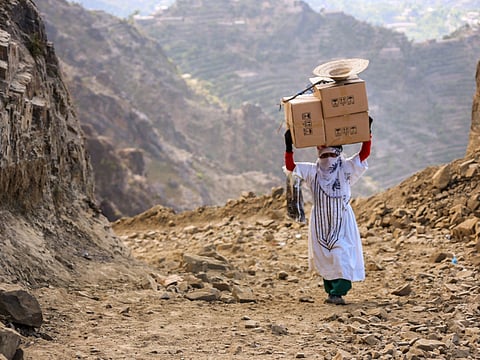Timeline: Two years of war in Yemen
Saudi Arabia decided to enter the war on March 26, 2015, in order to roll back Al Houthi gains and restore Hadi’s power

Yemen’s war has killed around 7,700 people and wounded 42,500, according to UN figures, since it erupted two years ago. The conflict underscores the regional rivalry between Iran whichbacks Al Houthi rebels and Saudi Arabia, which heads the nine-member Arab coalition fighting to restore the internationally-recognised presidency of Abd Rabbo Mansour Hadi. Here is a brief overview:
March 26, 2015: The Arab coalition launches operation Decisive Storm with air strikes on Al Houthi rebels to defend Hadi, who seeks shelter in Riyadh. The coalition comprises of Bahrain, Kuwait, Qatar and the UAE along with Egypt, Jordan, Morocco and Sudan.
April: The operation is renamed Restoring Hope. The goal is to defeat Al Houthi rebels who have controlled the capital since September 2014 in addition to large swathes of land in northern, central and western Yemen.
July 17: The Yemen government announces the liberation of southern Aden province after more than four months of fighting.
August: The coalition supplements its air power with hundreds of ground troops. By mid-August, government forces have retaken the south, but face a growing threat from Daesh and Al Qaida militants.
February 2016: Riyadh says government forces control “more than three quarters” of Yemen, despite trouble advancing in the southwestern province of Taiz and in Marib, central Yemen.
August 9: Three months of UN-brokered peace talks in Kuwait end in stalemate, and coalition aircraft resume strikes on Sana’a.
January 7, 2017: Pro-government troops backed by coalition planes and ships launch operation Golden Spear around the strategic Bab Al Mandab Strait, between the Red Sea and the Gulf of Aden.
Sign up for the Daily Briefing
Get the latest news and updates straight to your inbox


